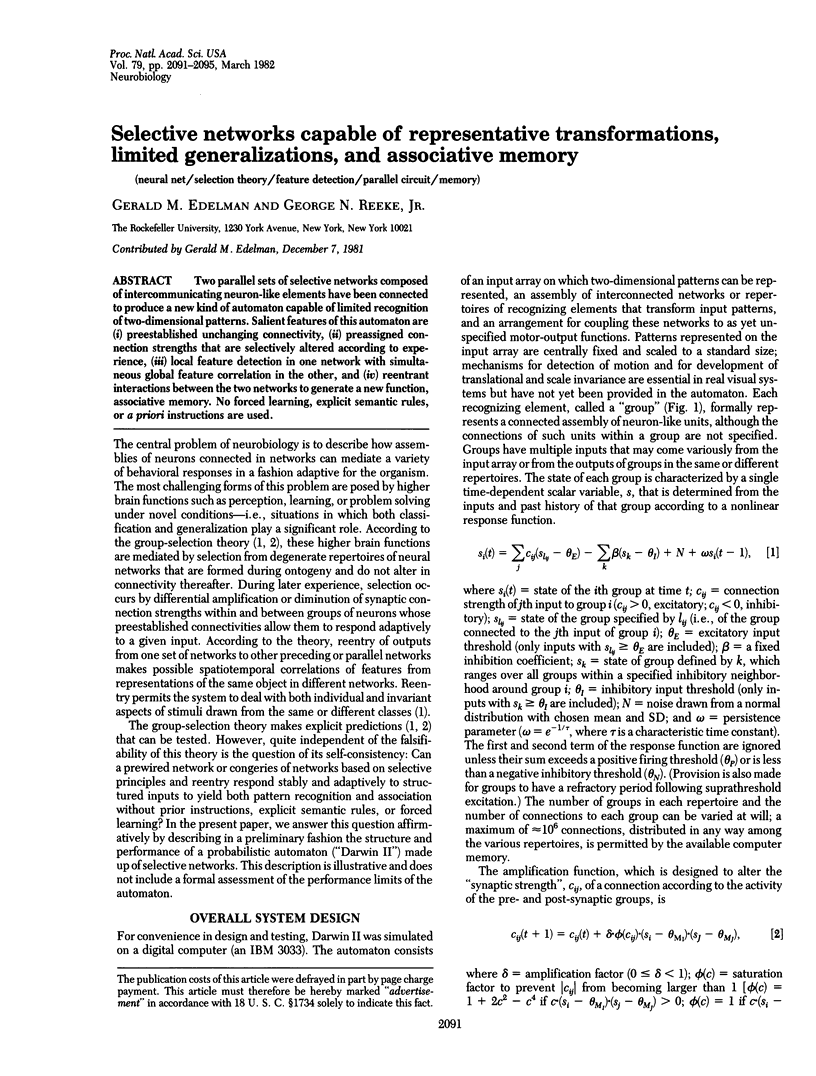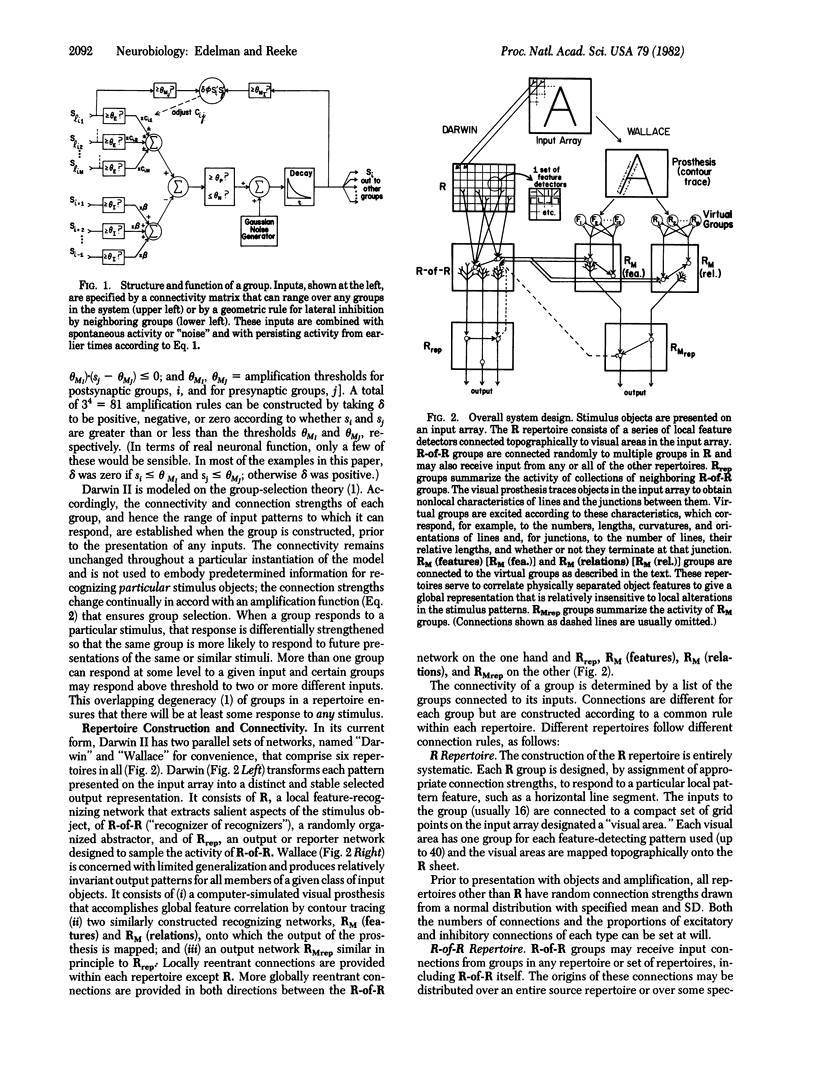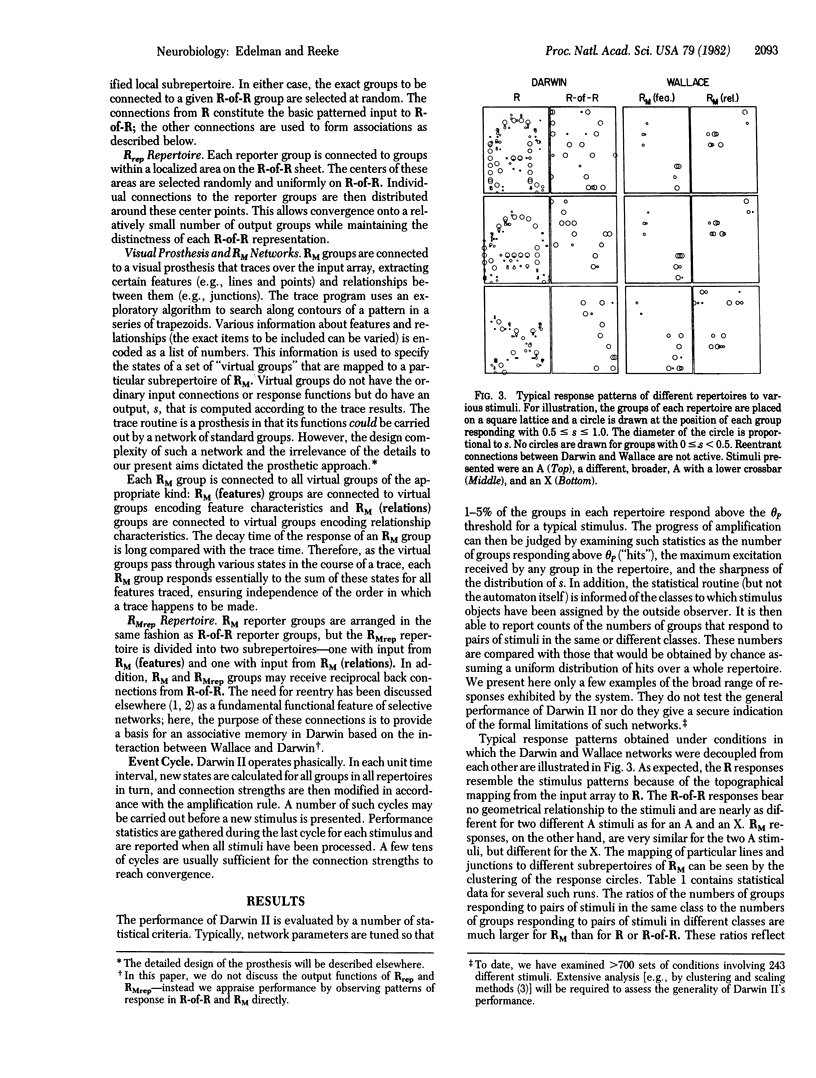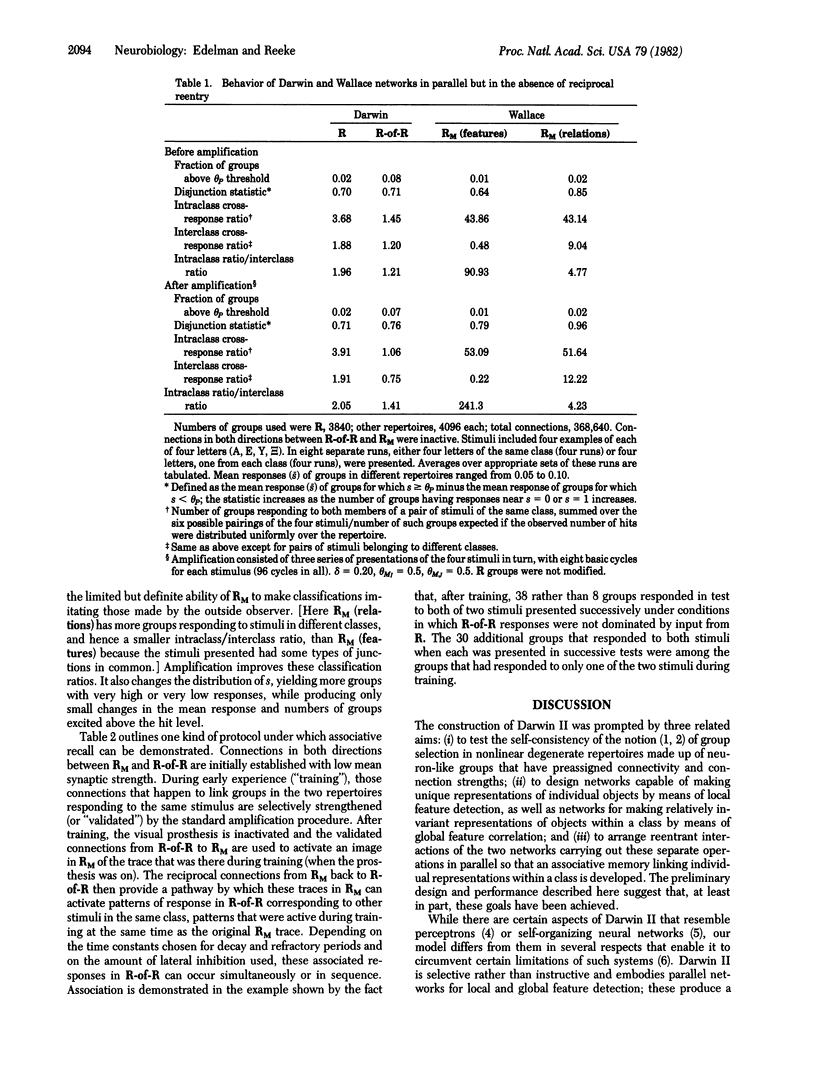Abstract
Two parallel sets of selective networks composed of intercommunicating neuron-like elements have been connected to produce a new kind of automaton capable of limited recognition of two-dimensional patterns. Salient features of this automaton are (i) preestablished unchanging connectivity, (ii) preassigned connection strengths that are selectively altered according to experience, (iii) local feature detection in one network with simultaneous global feature correlation in the other, and (iv) reentrant interactions between the two networks to generate a new function, associative memory. No forced learning, explicit semantic rules, or a priori instructions are used.
Full text
PDF




Selected References
These references are in PubMed. This may not be the complete list of references from this article.
- von der Malsburg C. Self-organization of orientation sensitive cells in the striate cortex. Kybernetik. 1973 Dec 31;14(2):85–100. doi: 10.1007/BF00288907. [DOI] [PubMed] [Google Scholar]


